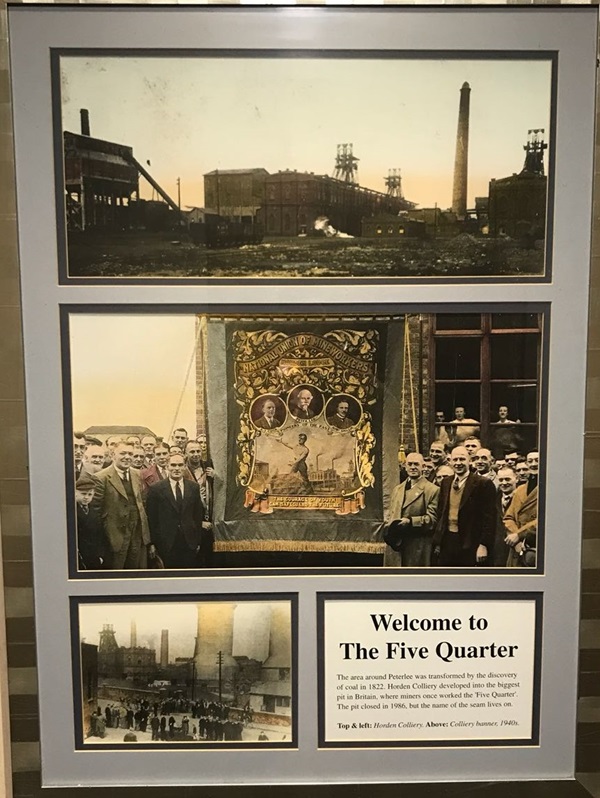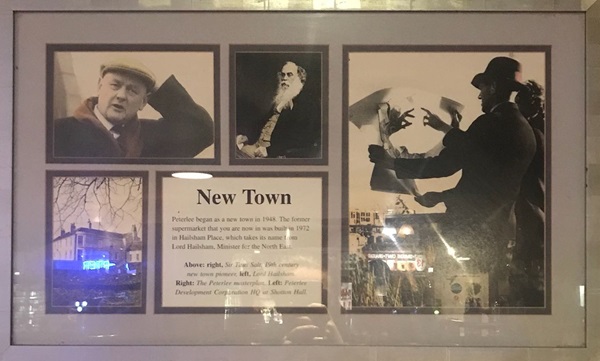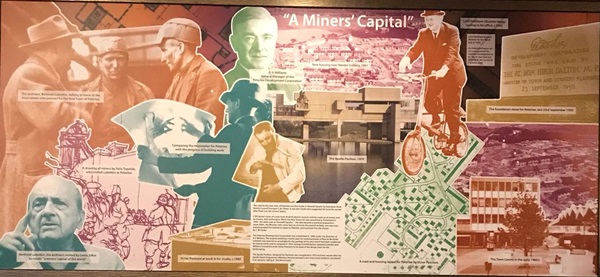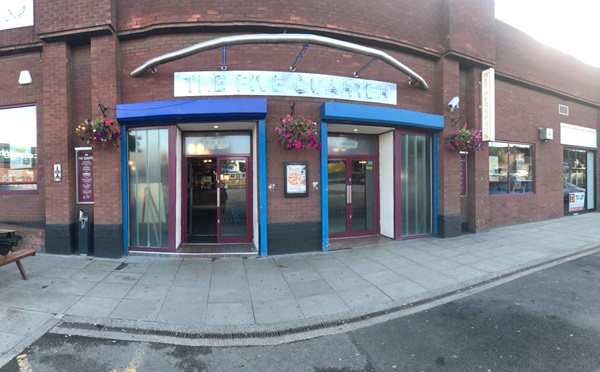Peterlee and coal-mining went hand in hand for more than 150 years. At one time, Horden Colliery was the biggest pit in Britain, where miners worked the ‘High Main’, ‘Five Quarter’ and ‘Yard’ seams. The first substantial development in the Peterlee area followed the arrival of the Burdon family, in the 1750s. Rowland Burdon bought and improved the Manor of Castle Eden. His work was continued by his son of the same name. However, it was the discovery of coal deposits, in 1822, which transformed the area.
Prints and text about The Five Quarter.

The text reads: The area around Peterlee was transformed by the discovery of coal in 1822. Horden Colliery developed into the biggest pit in Britain, where miners once worked the ‘five quarter’. The pit closed in 1986, but the name of the seam lives on.
Top and left: Horden Colliery
Above: Colliery banner 1940s
Prints and text about Peterlee.

The text reads: Peterlee began as a new town in 1948. The former supermarket that you are now in was built in 1972 in Hailsham, minister for the north east.
Above: right, Sir Titus Salt 19th century new town pioneer, left, Lord Hailsham
Right: The Peterlee masterplan
Left: Peterlee Development Corporation HQ at Shotton Hall.
Prints and text about Peterlee’s history.

The text reads: The case for the new town of Peterlee was first made in farewell squalor by Easington rural district council surveyor CW Clarke. It was also Clarke who suggested the town be named after Peter Lee, the miners leader.
CW Clarke’s vision of a new town fired his district council, entirely made up of miners and ex-miners, with enthusiasm. When the New Towns Act was presented to Parliament in 1946 – the same year as ‘farewell squalor’ – the idea became a practical proposition, Lewis Silkin, the minister, who came here to convince the council to delay, was won over and persuaded the cabinet to agree to Peterlee, and nominate the site chosen by CW Clarke.
The Peterlee development corporation was established in 1948, under the direction of AV Williams. The original ambitious master-plan for towering blocks of flats by Berthold Lubetkin was rejected as unsuitable for the geology of the area which had been weakened by mining works and he resigned in 1950. George Grenfell Baines replaced Lubetkin and Williams invited the artist Victor Pasmore to be head of the design team for the landscaping.
The Apollo Pavilion, designed by Pasmore, was completed in 1970 and was named after the Apollo space programme. Nikolaus Pevsner praised it, but many local residents considered it an eyesore, calling it ‘the monstrosity’.
External photograph of the building – main entrance.

If you have information on the history of this pub, then we’d like you to share it with us. Please e-mail all information to: pubhistories@jdwetherspoon.co.uk